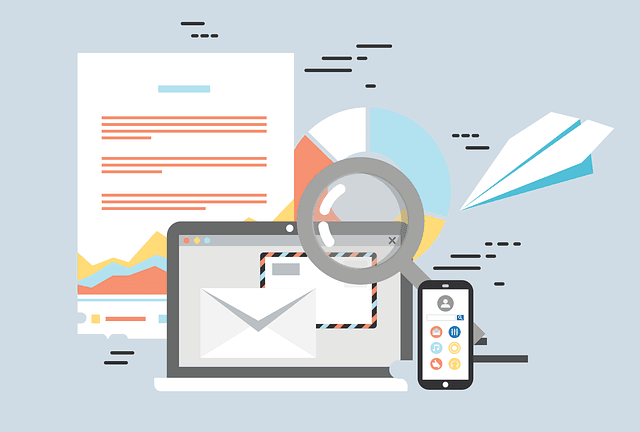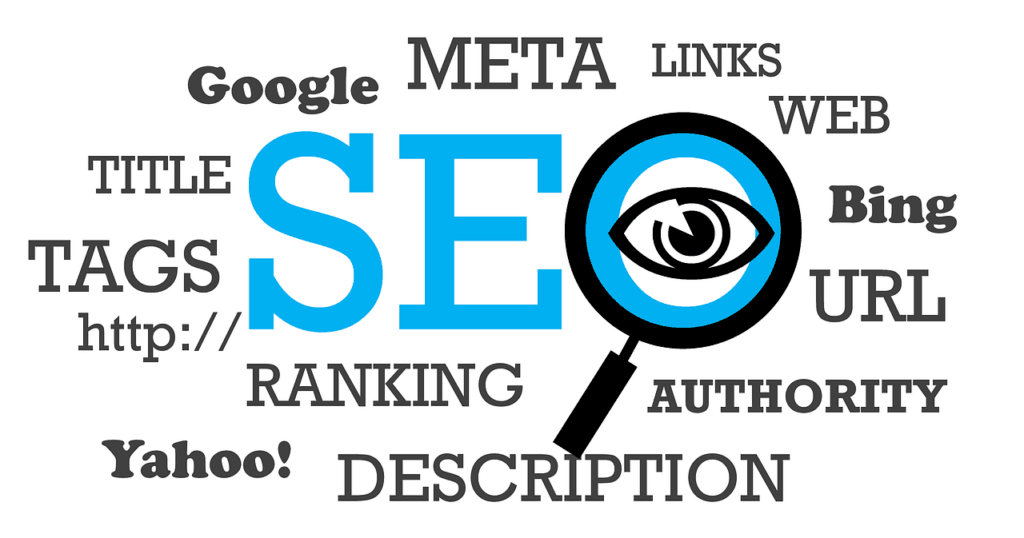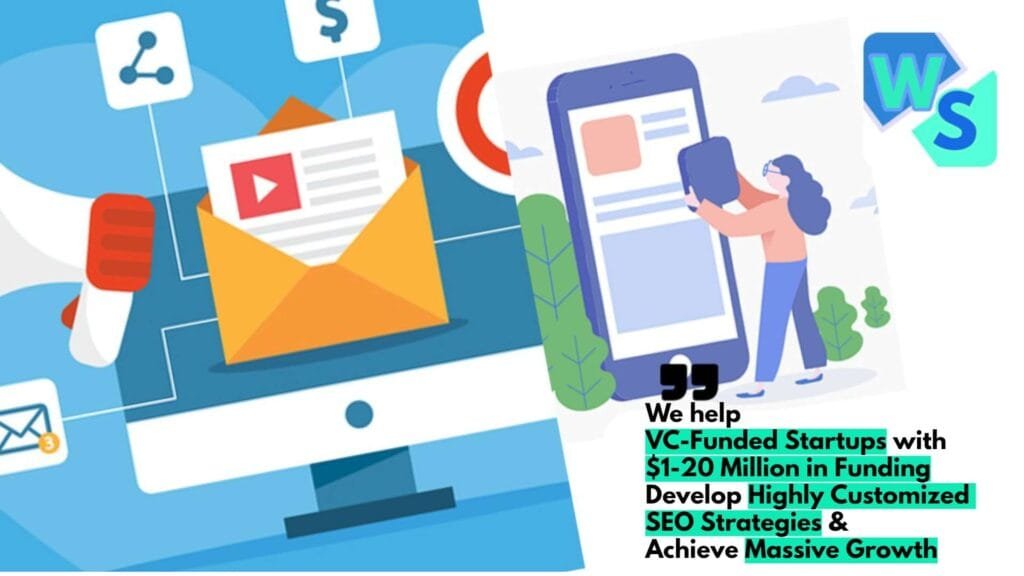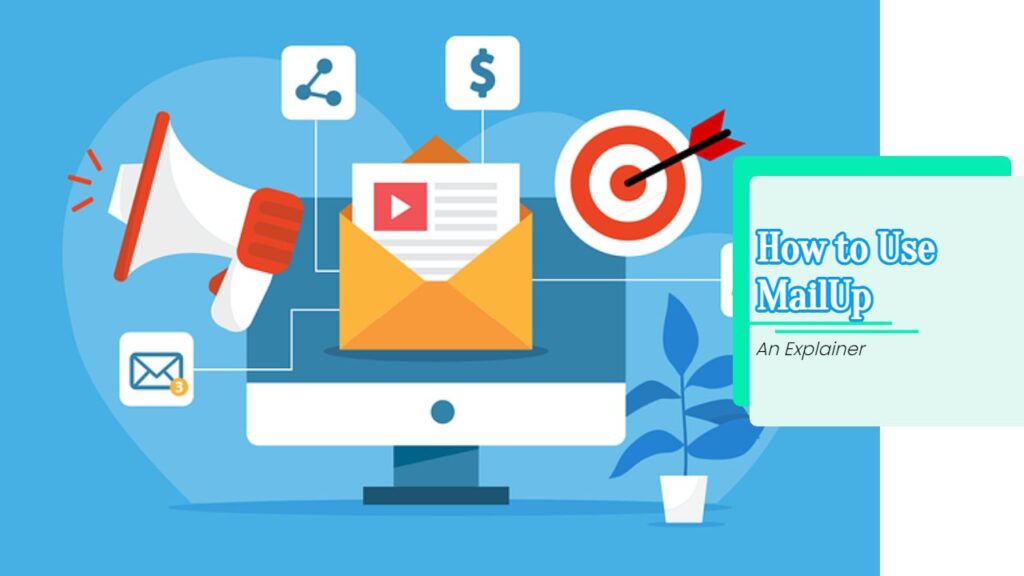Understanding Outbound Marketing
Definition of Outbound Marketing
Outbound marketing refers to the practice of businesses initiating contact with potential customers to generate interest in their products or services. This approach allows you to control the messaging, determining what to say, how to say it, and when to present it to your target audience. Traditional methods include print advertisements, direct mail campaigns, television commercials, and billboard advertising. These strategies continue to play a significant role in lead generation and brand visibility, even in a digital-centric world (AI Bees).
| Outbound Marketing Technique | Description |
|---|---|
| Print Ads | Traditional advertising through newspapers and magazines. |
| Direct Mail | Sending promotional material directly to potential customers through the postal service. |
| Television Ads | Commercials broadcast on TV to reach a broad audience. |
| Billboards | Large outdoor advertisements displayed in high-traffic areas. |
| Trade Shows | Events where businesses showcase their products to potential clients and partners. |
Importance of Outbound Marketing
Outbound marketing remains crucial for businesses aiming to reach and engage new audiences. While digital marketing channels have gained prominence, outbound methods can effectively introduce your brand to potential customers who may not yet be familiar with it. Cold calling, for instance, allows you to initiate conversations directly with prospects, emphasizing a solutions-oriented approach rather than traditional sales tactics.
Additionally, customized cold emails, especially in tandem with account-based marketing, can significantly improve open and click-through rates, ultimately enhancing the effectiveness of your outbound strategies. A recent survey revealed that a substantial portion of B2B marketers are allocating increased budgets toward new marketing channels, including influencer marketing, short-form video content, and email newsletters, underscoring the evolving landscape of outbound marketing (HubSpot).
To better grasp and harness the potential of outbound marketing, consider exploring examples through our articles on marketing campaigns examples and successful marketing campaigns case studies.
Traditional Outbound Marketing Strategies
Traditional outbound marketing strategies have stood the test of time despite the rise of digital marketing. These methods can still play a critical role in generating leads and enhancing brand visibility.
Print Ads and Direct Mail
Print advertisements and direct mail are classic forms of outbound marketing. Print ads can be found in magazines, newspapers, brochures, and flyers, effectively reaching specific demographics. Direct mail campaigns involve sending physical marketing collateral directly to potential customers’ mailboxes, facilitating personal connections with your target audience. Personalized gifting through direct mail is highlighted as an effective approach, allowing for tailored interaction with prospects (Alyce).
| Type of Print Advertising | Average Cost Per Ad | Average Response Rate |
|---|---|---|
| Magazine | $500 – $100,000 | 1% – 5% |
| Direct Mail | $0.50 – $3.00 | 5% – 9% |
| Newspaper | $2,000 – $20,000 | 1% – 2% |
Television Ads and Billboards
Television ads and billboards provide high visibility and the potential to reach vast audiences. Television commercials are often broadcast during peak viewing hours, capitalizing on viewer interest. Billboards effectively capture audience attention in high-traffic areas, serving as constant reminders of your brand. Both methods can enhance brand recognition and influence purchasing decisions.
| Advertising Channel | Cost Range | Audience Reach |
|---|---|---|
| Television Ads | $5,000 – $500,000 | Millions (varies by channel/time slot) |
| Billboards | $250 – $14,000 per month | Local/Regional (varies by location) |
Trade Shows and Events
Attending trade shows and industry events provides valuable opportunities for face-to-face interactions with potential buyers. These gatherings foster personal connections and allow you to showcase your products or services directly to your target audience. Engaging attendees through personalized gifts can often prove more effective than traditional lead generation activities such as badge scanning (Alyce).
| Trade Show Strategy | Benefits |
|---|---|
| Face-to-Face Engagement | Builds trust and connection |
| Product Demonstrations | Showcasing real-time value |
| Networking Opportunities | Expanding business connections |
Incorporating these traditional outbound marketing strategies into your overall marketing efforts can significantly boost your campaign’s effectiveness. For insights on how to measure success in your campaigns, check our article on measuring marketing campaign success.
Modern Outbound Marketing Techniques
In the evolving landscape of outbound marketing, employing contemporary techniques is essential for connecting with your audience. Here, you will discover three effective methods: cold calling strategies, customized cold emails, and influencer marketing approaches.
Cold Calling Strategies
Cold calling remains a pivotal outbound marketing tactic for reaching new audiences, initiating conversations, and generating leads. This approach emphasizes providing solutions to clients’ problems rather than relying on traditional sales pitches. It is essential to prepare beforehand, researching potential clients to tailor your pitch effectively.
| Strategy | Key Features |
|---|---|
| Identify Target Audience | Research and select prospects who would benefit from your offering. |
| Personalization | Customize your message to resonate with individual prospects. |
| Problem-solving Focus | Provide helpful solutions instead of just promoting your products. |
| Follow-Up | Implement follow-up calls for those who show interest during initial outreach. |
Consider enhancing your cold calling techniques with measuring marketing campaign success metrics to evaluate the effectiveness of your outreach efforts.
Customized Cold Emails
Customized cold emails serve as a powerful tool in outbound marketing, especially when combined with account-based marketing. Sending personalized emails can significantly boost open and click-through rates, ultimately leading to increased conversions. Effective cold emailing involves creating relevant content that speaks directly to your audience’s needs.
| Email Component | Best Practices |
|---|---|
| Subject Line | Use compelling and relevant subject lines to encourage opens. |
| Personalization | Address recipients by name and reference specific details relevant to them. |
| Value Proposition | Clearly articulate the value your offering provides to the recipient. |
| Call to Action | Include a clear call to action that prompts the recipient to respond. |
For enhanced results, consider implementing email marketing campaign automation tools to streamline your outreach process and improve tracking.
Influencer Marketing Approaches
Influencer marketing has emerged as a significant aspect of outbound marketing, allowing businesses to engage with specific audiences more genuinely. By partnering with content creators or affiliates, you can establish brand credibility and trust with your target demographics. This strategy not only broadens your reach but can also yield valuable insights into consumer behavior.
| Advantages of Influencer Marketing | Considerations |
|---|---|
| Enhanced Credibility | Influencers can lend authenticity to your brand message. |
| Targeted Reach | Collaborate with influencers who align with your brand values. |
| Engagement Boost | Influencers can drive engagement and attract new audiences. |
| Campaign Tracking | Monitor influencer performance and engagement metrics effectively. |
Explore partnerships with influencers through influencer marketing campaign partnerships to maximize your outreach efforts.
Incorporating these modern outbound marketing techniques into your overall strategy can enhance effectiveness and drive success in reaching your target audience.
Measuring Outbound Campaign Performance
In the competitive landscape of marketing, it is vital for you to measure the effectiveness of your outbound campaigns. By employing certain metrics, you can ascertain the return on investment (ROI), key performance indicators (KPIs), and conversion rates.
Importance of ROI in Outbound Marketing
Understanding the ROI of your outbound marketing efforts is critical for justifying your expenditures and refining your strategies. Companies that adopt data-driven strategies often observe a 15-20% increase in ROI. Measuring your campaign’s effectiveness goes beyond progress tracking; it fundamentally influences your broader marketing strategy (Revnew).
Key Performance Indicators (KPIs)
Identifying and monitoring KPIs is essential for evaluating your outbound marketing initiatives. These indicators provide insights into what aspects of your campaign are performing well and what may need adjustment. Common KPIs include lead generation, brand awareness, and customer engagement.
| KPI | Description | Importance |
|---|---|---|
| Lead Generation | Number of potential customers identified | Indicates campaign effectiveness |
| Brand Awareness | Measurement of audience recognition | Assesses reach in the target market |
| Customer Engagement | Interactions with your campaign | Evaluates audience interest |
According to experts, measuring these KPIs can provide valuable insights into how effectively your efforts align with your business goals.
Significance of Conversion Rate
The conversion rate is a critical KPI within outbound marketing campaigns. This statistic reveals the percentage of recipients who take the desired action after engaging with your campaign, such as completing a form, signing up for a newsletter, or making a purchase (Revnew).
| Action | Conversion Rate (%) |
|---|---|
| Form Submission | 5-10% |
| Newsletter Signup | 2-4% |
| Purchase Completion | 1-3% |
Monitoring your conversion rate enables you to gauge the success of your campaigns and adjust your strategies accordingly. Clearly reporting these results to all stakeholders can help foster understanding and prompt action based on the data presented.
By focusing on ROI, KPIs, and conversion rates, you can enhance the efficacy of your outbound marketing campaign techniques and drive better results for your business. For additional insights on this topic, consider exploring marketing campaign performance metrics.
Effective Outbound Marketing Channels
In the realm of outbound marketing, utilizing the right channels is essential for driving successful campaigns. Here are three highly effective outbound marketing channels that you should consider: short-form video marketing, social media advertising, and email newsletters.
Short-Form Video Marketing
Short-form video is a crucial channel for engaging audiences in today’s fast-paced digital environment. Marketing professionals recognize the value of this format, with 29% planning to leverage video marketing for the first time in 2023 (HubSpot). This type of content provides a visually engaging way to convey messages swiftly and effectively.
The impact of video marketing is significant. Research shows that 86% of marketers experienced increased traffic to their websites due to video content, and 78% confirmed that it directly helped generate leads (Wyzowl). Short videos on platforms such as Instagram and TikTok can capture viewer attention and encourage engagement, making this an indispensable tool for your outbound marketing strategy.
| Benefit | Metric |
|---|---|
| Increased website traffic | 86% of marketers |
| Leads generated from video | 78% of marketers |
Social Media Advertising
Social media advertising has transformed into a formidable outbound marketing channel. Platforms like Facebook, Instagram, and YouTube dominate both B2B and B2C marketing strategies. With more than half the global population spending an average of over two hours daily on social media, this channel offers extensive reach and engagement opportunities (Ron Sela).
Research indicates that social media influences 84% of C-level and VP-level buyers during their purchasing decisions. Creating targeted ads and tailored content on these platforms can generate brand awareness and foster customer relationships. Notably, businesses that have personalized their social media strategies have experienced exceptional results; for example, SAP reported a 900% increase in fans and followers (Ron Sela).
| Impact | Metric |
|---|---|
| Influence on buyer decisions | 84% of buyers |
| Increase in social media fans | 900% for SAP |
Email Newsletters
Email marketing remains one of the top three B2B marketing channels. This method serves as a critical pipeline for communication, content delivery, and transactions, facilitating engagement with both prospective and existing clients.
Effective email newsletters focus on personalization and planning to foster client relationships. The goal is to convert prospective customers into recurring clients by delivering relevant and engaging content. This strategy not only builds brand loyalty but also enhances user experience, making it an essential component of your outbound marketing efforts. For guidance on automating these campaigns, refer to our article on email marketing campaign automation.
| Feature | Importance |
|---|---|
| Personalization | Enhances engagement and relationships |
| Planning | Critical for campaign success |
By integrating these effective channels into your outbound marketing strategy, you can improve engagement, drive conversions, and build a lasting connection with your target audience. You may also want to explore our insights on marketing campaigns examples to further enhance your strategies.
Future of Outbound Marketing
Integration with Inbound Strategies
In the evolving landscape of marketing, the integration of inbound and outbound strategies is becoming increasingly vital. A survey indicates that about 40% of respondents foresee this blending as a key trend for the next two years (Databox). This integration allows businesses to create a more comprehensive marketing approach that caters to varying customer needs and preferences.
By combining outbound techniques like targeted advertising and email outreach with inbound methods such as content marketing and SEO, you can enhance customer engagement. Utilizing tactics like email marketing campaign automation and influencer marketing partnerships can help you reach and nurture leads more effectively.
| Strategy Type | Description |
|---|---|
| Outbound Marketing | Direct methods to gain immediate attention, e.g., cold calling and advertisements. |
| Inbound Marketing | Indirect strategies that focus on creating value and attracting customers, e.g., blogs and social media. |
The key to successful marketing campaigns lies in understanding your audience and tailoring your strategies accordingly. Companies should focus on personalized marketing campaigns benefits that resonate with potential customers on a deeper level, thereby encouraging conversions.
Predictions for 2023 and Beyond
Looking ahead, several trends are expected to shape the future of outbound marketing. Effective strategies suggested for 2024 include investing in social media advertising and search engine marketing (Databox). Short-form video content, influencer marketing, and search engine optimization (SEO) are anticipated to be top channels for marketers.
B2B marketers are increasingly easing budgets for newer marketing channels, with a 41% increase noted in investing for platforms such as websites and email newsletters (HubSpot). Social media marketing, in particular, plays a crucial role, influencing 84% of C-level and VP-level buyers during their purchasing decisions (Ron Sela).
Furthermore, businesses are leveraging webinars for lead generation and nurturing; 73% of marketers highlight the high-quality leads obtained from these events. Communication webinars have particularly excelled, achieving a conversion rate of 67.05%. By adopting these emerging marketing trends, you can enhance your outbound marketing campaign techniques and stay ahead in the competitive landscape.
The implementation of these predicted strategies will necessitate careful monitoring and analysis, relying on marketing campaign performance metrics to assess effectiveness and optimize approaches.
Enhancing Outbound Campaigns
To maximize the effectiveness of your outbound marketing efforts, consider implementing innovative strategies that can elevate your campaigns. Here are three techniques that can significantly enhance your outreach.
Email Signature Marketing
Email signature marketing is an often-overlooked technique that can effectively promote your brand with each email you send. By incorporating links to your latest campaigns, promotions, or content in your email signature, you can turn every correspondence into a subtle marketing opportunity.
| Element | Description |
|---|---|
| Call-to-Action | Direct recipients to a landing page or specific campaign. |
| Branding | Includes logo and social media links to enhance visibility. |
| Professionalism | A well-designed signature reflects positively on your business. |
This approach ensures that all communications consistently reinforce your marketing messages. It allows you to reach your audience seamlessly while promoting a cohesive brand image.
For insights into automating your email marketing efforts, refer to our article on email marketing campaign automation.
Personalized Gifting Strategies
Personalized gifting through direct mail remains a timeless and impactful method for engaging potential customers. Sending thoughtful gifts directly to prospects’ mailboxes creates personal interactions and establishes a connection beyond traditional marketing channels.
Gift box incentives have been noted for their ability to attract potential customers, achieving impressive results. A campaign by Alyce, for instance, demonstrated a 63% gift acceptance rate and an 18% opportunity creation rate, underscoring the effectiveness of this outbound strategy (Alyce). Personalized gifts help to make your outreach memorable and foster stronger relationships.
To learn more about the benefits of personalized approaches, check out our article on personalized marketing campaigns benefits.
Trade Show Engagement Tactics
Trade shows and industry events present valuable opportunities for face-to-face interactions with potential buyers. Effective engagement during these events can lead to higher conversion rates. Rather than solely focusing on lead generation activities, consider incorporating gifting strategies.
Gifting at trade shows can be a powerful method to engage attendees, as it builds goodwill and fosters conversations. A thoughtful gift can create lasting impressions far beyond mere lead capture through badge scanning.
To make the most of your trade show participation, explore our insights into marketing campaign performance metrics to evaluate your engagement strategies effectively.
By implementing email signature marketing, personalized gifting strategies, and trade show engagement tactics, you can significantly enhance your outbound marketing campaigns, making them more effective and memorable.
Outbound Marketing Metrics
To effectively assess the success of your outbound marketing campaign techniques, it is essential to monitor various metrics. These metrics can provide insights into call center performance, conversion rates, and social media marketing effectiveness.
Outbound Call Center Success Metrics
Outbound call center success metrics are measurable values that enable businesses to track the efficiency and effectiveness of their outbound marketing campaigns. These metrics not only highlight agent performance but also help in identifying areas for improvement and the need for additional training. Key metrics you should consider include:
| Metric | Description |
|---|---|
| Number of Calls Made | Total volume of outbound calls made in a specific timeframe |
| Successful Calls | Number of calls leading to a sale, appointment, or desired outcome |
| Average Handling Time (AHT) | Average time agents spend on calls, including wait and follow-up time |
| Call Abandonment Rate | Percentage of calls that are dropped before reaching an agent |
| Customer Satisfaction Score | Measure of customer contentment post-call |
For further details on these metrics, visit VoiceSpin.
Conversion Rate and Average Handle Time
Conversion Rate is a critical metric for outbound sales teams, as it measures the percentage of outbound calls that lead to successful outcomes, such as closed sales or booked appointments. A lower conversion rate can inflate the cost per lead and impact your operational expenses.
| Metric | Significance |
|---|---|
| Conversion Rate | Indicates effectiveness of calls in achieving goals |
| Average Handle Time | Helps assess the efficiency of call management |
Average Handle Time (AHT) measures the average time taken by agents to complete a call, which factors in talk time, hold time, and after-call activities. Reducing AHT can enhance productivity, allowing agents to make more calls, thereby increasing the potential for conversions. You can learn more about these metrics from VoiceSpin.
Social Media Marketing Insights
Social media marketing significantly influences B2B marketing strategies, playing a vital role in the purchasing decisions of 84% of C-level and VP-level buyers. With over half of the global population spending more than two hours daily on social media, it offers a potent avenue for brand awareness and direct marketing to targeted audiences. Noteworthy insights include:
| Insight | Data/Impact |
|---|---|
| Influence on Decision Makers | 84% of C-level and VP-level buyers are influenced |
| Average Daily Usage | More than half of the world’s population uses social media for 2+ hours daily |
| Case Study: SAP | Achieved a 900% increase in followers by tailoring social media strategies to specific markets; 17% interaction rate |
For more on the role of social media in marketing, visit Ron Sela.
By keeping track of these outbound marketing metrics, you can continuously refine your strategies and enhance your marketing campaign performance. For more comprehensive information on measuring your campaign success, refer to measuring marketing campaign success.





















